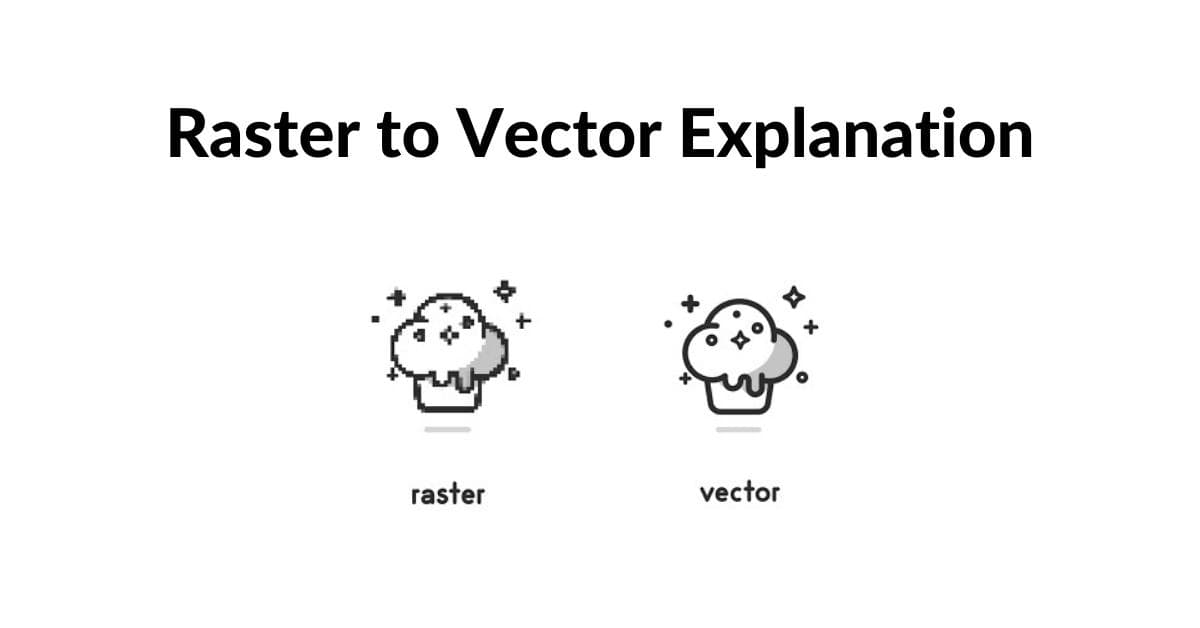In the world of digital photo editing and graphics, “Raster to Vector” is a term that frequently crops up, especially when discussing image conversions and graphic design projects. But what exactly does it mean, and why is it crucial in the realm of design and graphics? In this article, we will dive deep into the intricacies of raster to vector conversion, explaining the concept, its importance, and the tools and techniques involved. So, let’s embark on a journey to understand the fascinating world of raster to vector transformation.
Understanding Raster and Vector Graphics
Raster Graphics:
Raster graphics, also known as bitmap images, are made up of pixels, which are tiny colored squares or dots. Each pixel carries specific information about color, making up the entire image. Common file formats for raster graphics include JPEG, PNG, and GIF. While raster graphics excel at representing detailed images and photographs, they have some inherent limitations. When scaled up, raster graphics tend to lose quality and become pixelated.
Vector Graphics:
Vector graphics, on the other hand, are based on mathematical equations, using lines and curves to define shapes and objects. They are typically created using vector editing software like Adobe Illustrator, CorelDRAW, or Inkscape. Since vector graphics are resolution-independent, they maintain their quality when resized. This scalability makes them ideal for logos, icons, and illustrations.
Raster to Vector Conversion: The Need
Raster to vector conversion is the process of transforming a raster image into a vector format. This conversion is necessary for various reasons:
- Scalability: Raster images can become blurry and pixelated when scaled up. Converting them to vectors allows for unlimited scalability without loss of quality.
- Editing Flexibility: Vector images are highly editable, enabling designers to make precise adjustments to shapes, colors, and details.
- Print Quality: Vector graphics are essential for high-quality print materials like brochures, banners, and posters.
- Logo Creation: Most logos are created as vector images to ensure adaptability across various platforms and sizes.
Raster to Vector Conversion Techniques
Several methods can be used to perform raster to vector conversion. Here are some common techniques:
- Manual Tracing: Skilled designers use vector software to manually trace the elements in the raster image, creating vector shapes.
- Auto-Trace Tools: Many design software applications offer automatic tracing tools that can convert raster images into vector format. These tools use algorithms to detect edges and lines.
- Outsourcing Services: Professional graphic design agencies provide raster to vector conversion services, ensuring high-quality results.
FAQs
1. Why is raster to vector conversion necessary for graphic design?
Raster to vector conversion is necessary because it allows for scalability, editing flexibility, and high-quality print materials. It is crucial for creating logos, icons, and illustrations that can adapt to various sizes and platforms.
2. Can any raster image be converted to a vector image?
In theory, yes. However, the quality of the conversion depends on the complexity of the original image and the skill of the person performing the conversion. Simple images with clear edges are easier to convert accurately.
3. What software can I use for raster to vector conversion?
Popular vector editing software such as Adobe Illustrator, CorelDRAW, and Inkscape are commonly used for raster to vector conversion. They provide a range of tools for both manual tracing and automated conversion.
4. What is the cost associated with raster to vector conversion services?
The cost can vary depending on factors like the complexity of the image, the level of detail, and the service provider. On average, expect to pay anywhere from $10 to $50 per image for professional conversion services.
5. Are there any free tools for raster to vector conversion?
Yes, there are some free online tools available for basic raster to vector conversion. However, for high-quality results and more complex images, it’s often best to use professional software or services.
Conclusion
Raster to vector conversion is a crucial process in the world of graphic design and digital imaging. Understanding the difference between raster and vector graphics, as well as the need for conversion, empowers designers to create stunning, scalable, and adaptable graphics. Whether you’re looking to transform an old logo, digitize artwork, or create print materials, raster to vector conversion is a valuable skill and process.
Now that you have a comprehensive understanding of raster to vector conversion, you can make informed decisions when it comes to graphic design projects. So, embrace the power of vectors, and let your creativity flow without limitations!
This page was last edited on 28 February 2024, at 5:50 pm
